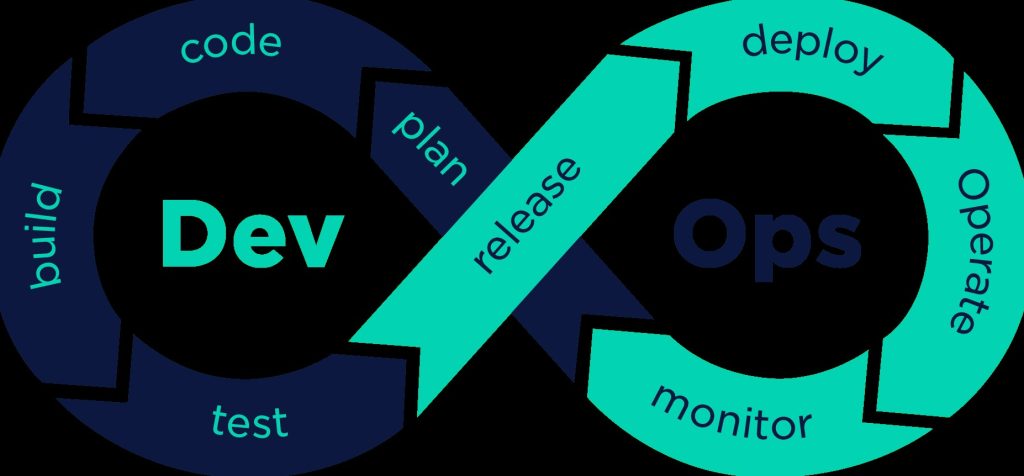DevOps
DevOps is a combination of two terms, one is software development and the second is operations. This allows a team to manage the entire software lifecycle, from development to testing, deployment and operations. DevOps helps you reduce the disconnect between software developers, quality engineers (QA) and system administrators.
Why is DevOps important?
The software development process can be a very manual process, resulting in many coding errors. Development and operations teams may not always be in sync, which can slow down software delivery and frustrate customers. DevOps creates efficiencies in all activities related to developing, deploying, and maintaining software. Linking development and performance leads to increased visibility, more realistic requirements, better communication and faster time to market.
Why you should consider DevOps
Simply put, companies that have adopted DevOps are in a better position to strengthen their position in existing markets and expand into new markets. In fact, the adoption of DevOps is quickly becoming the standard tool for software development. A quick look at corporate examples – think Apple, Netflix, Tesla, Uber, AirBnB and many others – reveals early success and huge potential.
Once DevOps is implemented, companies have seen an increase in team satisfaction with the development process. Because they employ modern software development methods, these companies attract and retain better talent, which will lead to more quality improvement, productivity improvement, and ultimately success. business. When developers are no longer doing tedious, manual coding tasks and are free to adapt and make changes, they are happier. A large financial software company saw a 15% increase in employee satisfaction just weeks after adopting a CD to support DevOps principles. Just as important, a happy and collaborative workforce means increased productivity, lower costs, and better logistics. Finally, any business that wants to deliver quality software quickly should take care of DevOps and CD support practices, which allow software to be built, tested, and deployed in incremental releases.
Companies that don’t embrace DevOps will lose power and fall further behind their competitors, demonstrating the ultimate change or perish reality in the world of software development as it exists in the world. gender. Which company do you want to work for
DevOps techniques and tools

As mentioned earlier, different levels such as continuous development, continuous integration, continuous research, continuous integration, and continuous monitoring and -Continuity is the DevOps lifecycleNow, let’s look at each DevOps lifecycle step by step.
Phase – 1: development continues
- This is the part that includes “scheduling” and “writing” the software. You decide on the vision of the project during the design phase and the developers start creating the application code. There are no DevOps tools required for configuration, but there are many tools for code maintenance.
- Code can be in any language, but you manage it using a version control tool. This code management process is known as source code control.
- Once the code has been generated, you will continue with the ongoing registration process.
Phase – 2: The connection is continuous
Tools: Jenkins, TeamCity, Travis
Flow chart:
- This phase is at the heart of the entire DevOps lifecycle. This is a practice that developers need to make frequent source code changes. This can be daily or weekly.
- You will work on each, allowing for early detection of problems if they exist. Building code includes not only compilation, but also code analysis, unit testing, integration testing, and packaging.
- Code that supports new features is integrated with existing code. Since software development is continuous, you need to continuously and efficiently integrate updated code into the system to reflect changes to end users.
- In this process, you use tools to build/package the code into an executable file so you can pass it to other processes.
Phase – 3: Testing continues
Tools: Jenkins, Selenium TestNG, JUnit
Flow chart:
- This is the stage where you continue to test the developed software for bugs using automated testing tools. These tools allow QAs to test multiple codebases individually to ensure bug-free functionality.
- In this process, you can use Docker Containers to replicate the test environment.
- Selenium is used for automated testing and reporting from TestNG. You can automate this entire testing process using a continuous integration tool called Jenkins.
Step – 4: The promotion continues
Flow chart:
- This is the stage where you deploy the code to the production server. It is also important to make sure that the code is applied correctly to all servers. Before proceeding, let’s try to understand a few things about configuration management and collection tools.
- This software here helps to get continuous input (CD). Configuration control is about establishing and maintaining the stability of the service and performance requirements of the application.
- Let me put it in simple terms, it is the practice of leaving work on servers, scheduling updates on all servers, and most importantly, keeping a consistent configuration on all servers.
- Storage equipment also plays a very important role during installation. Productivity tools help ensure compatibility between development, testing, configuration, and production environments. In addition to that, they help in getting up and down the sample quickly.
Step – 5: Monitoring is ongoing
Tools used: Splunk, ELK Stack, Nagios, New Relic
Flow chart:
- This is a critical stage in the DevOps lifecycle where you constantly monitor the performance of your application. Where you record important information about your use of the software. You process this information to ensure that the application is working properly. You fix system errors like memory not available, server unreachable, etc. at this time.
- This action includes the participation of the service team that will check the user’s work for bugs or any inappropriate system behavior. Continuous monitoring tools help you monitor application and server performance and also allow you to check power system health.
DevOps Advantages
Digital transformation
Business operations across all industries are undergoing digital transformation and technological innovation is driving this movement. These digital services aim to improve customer experience and employee productivity. Software is at the center of this change.
DevOps is essential for rapid delivery of digital services and quality. Therefore, the benefits of adopting DevOps at work come down to the fact that it is the key to a successful digital transformation.
Improved customer experience and satisfaction
The main reason to adopt DevOps in the company is to be able to provide high quality service to customers or employees. Creating value around a great customer experience and increased revenue is the best way to stay ahead of the competition. Efficiency and effectiveness can come from many factors, but ultimately, engaging with customers is key.
The cost of maintenance and improvement
Lifecycle monitoring and performance helps DevOps teams prevent deep-rooted bugs from causing lasting problems. This avoids unnecessary and costly work. This equates to gaining value and competitive advantage. DevOps professionals are skilled in many disciplines. This increases productivity as it streamlines work processes within a single project. Automation and productivity can help make DevOps teams lean. In addition, automation eliminates the need for professionals. Organizations can train general managers in all disciplines without investing in money. These successful practices avoid even costly delays and, at the same time, reduce risk.
Maintain a stable work environment
Did you know that the stress of releasing new features, fixes, or updates can disrupt the stability of your workplace and reduce overall productivity? Improve your work environment with a stable workflow that is compatible with DevOps practices.
Significant improvement in product quality
The relationship between development and work groups and the collection of frequent user feedback lead to significant improvements in product quality.
Maintain a stable work environment
Did you know that the stress of releasing new features, fixes, or updates can disrupt the stability of your workplace and reduce overall productivity? Improve your work environment with a stable workflow that is compatible with DevOps practices.
Significant improvement in product quality
The relationship between development and work groups and the collection of frequent user feedback lead to significant improvements in product quality.







